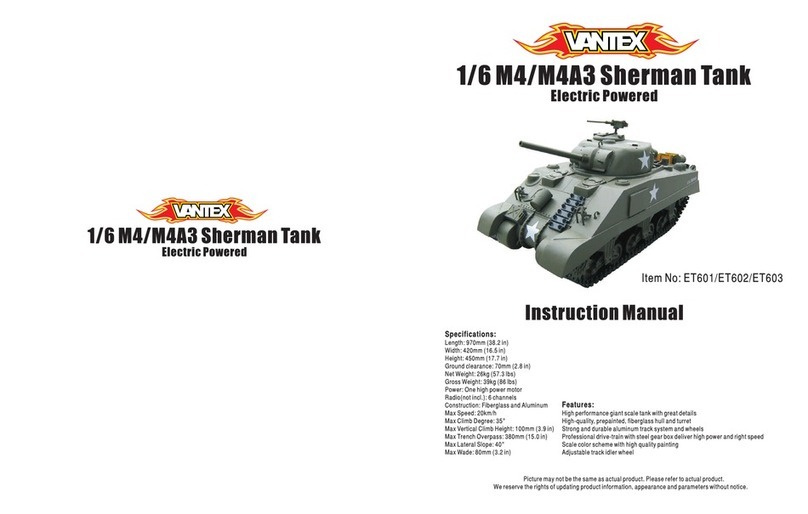This is a sophisticated hobby Product and not a toy. It must be operated with caution and common
sense and requires some basic mechanical ability. Failure to operate this Product in a safe and
responsible manner could result in injury or damage to the Product or other property. This Product is
not intended for use by children without direct adult supervision. The Product manual contains
instructions for safety, operation and maintenance. It is essential to read and follow all the
instructions and warnings in the manual, prior to assembly, setup or use, in order to operate correctly
and avoid damage or injury.
This model is controlled by a radio signal that is subject to interference from many sources outside
your control. This interference can cause momentary loss of control so it is advisable to always keep
a safe distance in all directions around your model, as this margin will help to avoid collisions or injury.
Always operate your model in an open area away from cars, traffic, or people.
Never operate the model into the street or populated areas for any reason.
Never operate your model with low transmitter batteries.
Carefully follow the directions and warnings for this and any optional support equipment (radio,
engine, chargers, rechargeable battery packs, etc.) that you use.
Keep all chemicals, small parts and anything electrical out of the reach of children.
Moisture causes damage to electronics. Avoid water exposure to all equipment not specifically
designed and protected for this purpose.
Safety Precautions and Warnings
We guarantee this kit to be free from defects in both material and workmanship at the date of purchase.
Limited Warranty & Limits of Liability
20 1
As a large model, the airplane is critical of proper battery use, control linkage setups and flying
techniques. Please pay particular attention to the following areas.
Check the radio installation and make sure all the control surfaces are moving correctly (i.e. the
correct direction and with the recommended throws). Test run the engine and make sure it transitions
smoothly from idle to full throttle and back. Also ensure the engine is tuned according to the
manufacturer’s instructions, and it will run consistently and constantly at full throttle when adjusted.
Check all the control horns, servo horns, and clevises to make sure they are secure and in good
condition. Replace any items that would be considered questionable. Failure of any of these
components in flight would mean the loss of your airplane.
Large models perform much more like full-size airplane than small models. If the airframe goes too
fast, such as in a high throttle dive, it may fail. The model should be flown like a full-scale airplane.
Throttle management is absolutely necessary.
Double-check the setscrews in all control horns to be sure they are very tight. Periodically check
these to be sure they have not loosened over time. Always use threadlock on metal-to-metal fasteners.
Be sure adequate batteries are used to power the receiver. It is recommended that two identical
6-volt receiver packs are used. Each pack must have a minimum of 2700mAh capacity. Use packs
of 3000mAh when super high torque servos are used.
Always range check the radio system per the manufacturer's instructions before the initial test flight
and periodically afterward.
ALWAYS use an ESV with a 1-amp load to check the receiver battery packs and the ignition pack
before each and every flight. If there is any doubt that the packs are questionable, DO NOT FLY
until the packs are recharged.
Maintain the proper mechanical advantage on all control surface linkages.
Never attempt to make full throttle dives!
Hardware checks
Receiver Battery Selection
Range check
Check the voltage of the on-board packs
Preflight
Step 2
Fully assemble the model. With a helper, lift the airplane with your index fingers to find the balance
point. The balance point (CG) should lie between the two marks on the wing. If not, try to move some
parts such as batteries to different position, or add the necessary weight to the nose or tail to obtain
the correct balance. Congratulations on the purchase of this model airplane. You will enjoy one of the most thrilling
experiences the radio control hobby has to offer.
The product is a professionally built, radio control model. It is very important that you operate this
model responsibly. Please read this instruction manual thoroughly and follow the directions.
Introduction






























